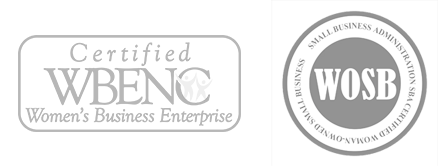Calculating MROI is vital when assessing whether your investments are yielding profitable returns. This metric cuts through the noise to answer the only key question: Are you earning more than you’re spending on marketing?
MROI (as a percentage) = (New Sales Generated – Marketing Costs) / Marketing Costs (multiply the quotient by 100 to convert the dollar amount to a percent)
On the surface, calculating MROI sounds like a piece of cake. But underneath the surface, in the details, is where most organizations unknowingly overinflate this calculation, giving them a false sense of performance. As the saying goes, “Garbage in, garbage out.” Inaccurate or incomplete data can lead to misleading MROI figures, jeopardizing your strategic decisions.
Most organizations overinflate their MROI calculation, giving them a false sense of performance and jeopardizing their strategic decisions.
Consider this scenario: You’re evaluating the MROI of a digital campaign. Naturally, you remember the advertising spend. But it doesn’t stop there. Every component contributing to the campaign must be accounted for—the cost of the time spent by your copywriter and designer, software costs, stock photography costs, and more. Only when you include every expense can you prevent your MROI from being artificially inflated.
To be even more precise, swap revenue with gross profit in your MROI calculation. While this approach will yield more conservative figures, it ensures that your marketing investments contribute positively to your bottom line. Calculating MROI based on gross profit safeguards your business against allocating resources to strategies that fail to generate enough profit to foster growth.
A Real-world Example
I’ll put these concepts into practice with a real-world example from one of our clients. Here is an example of an MROI calculation for a large-scale Google PPC (pay-per-click) campaign.
Marketing Costs:
- Google digital advertising costs: $213,848
- Agency fees for advertising management: $75,000
- Lead decision maker’s compensation—client side (3 percent involvement = 3 percent of salary): $2,924
- Software costs: $18,473 + $12,672 + $7,290 = $38,435
- Asset costs (stock photography): $950 Total marketing costs: $331,157
Gains generated:
This PPC campaign generated approximately $8,977,112 in new contracts for the client. With an average gross profit margin of 55 percent, this translates to $4,937,411 in gross profit.
Now, applying the formula, we calculate the MROI:
MROI = ($4,937,411 – $331,157) / $331,157 = 1,390 percent, or $13.90 in gross profit generated for every $1 invested—approximately a $14:$1 MROI.
Check out RedRover’s MROI Calculator to get an accurate understanding of your real return on marketing investment.
While it would be easy to stop our analysis here, given the strong MROI figure, the data alone doesn’t provide the full picture.
Interpreting MROI
To sharpen your MROI analysis, consider whether it exceeds industry norms. A robust MROI, especially when gross profit is used, is typically 300 percent or a $3:$1 return, but to truly gauge performance, compare your MROI against your industry’s specific benchmarks. In the case where you don’t have access to industry-specific benchmarks, create your own by monitoring your MROI over several quarters, striving to outperform your own baseline.
Check out the 12 BattlesTM Reader Hub at marketingtoolsforyou.com for this free resource: Industry Specific MROI Targets
Next, overdeliver by looking deeper than benchmarks. An exceptionally high MROI may suggest missed opportunities for lower-margin sales. An MROI of $2:$1 is notable, whereas an extraordinary
$1000:$1 suggests budget constraints are hindering growth. Investigate potential gains from increased investment in the early customer journey stages. Despite higher costs for initial engagement, such as raising awareness before purchase consideration, this strategy could significantly expand your market share.
Investing in the awareness stage of the customer journey, as opposed to the consideration or conversion stages, is more costly because it involves broader targeting and more extensive outreach efforts to capture the attention of potential customers who are not yet actively looking to buy. It also requires more frequency of message than in later stages. During the awareness stage, potential customers are first introduced to your company, product, or service.
This introduction can occur passively, such as when they encounter an online ad while going about their daily activities, or it can be an active process where individuals have a specific need and seek out a solution. Getting noticed in the awareness stage often requires a multi-channel approach—leveraging advertising, content marketing, public relations, and social media—to educate and inform a diverse audience. The goal is to plant the seeds of brand recognition and preference early on so that when consumers reach the decision-making or consideration stage, they are already familiar with the brand and trust it. This foundational work is resource-intensive but will lead to a commanding presence in the market and a larger share of future sales.
A higher MROI isn’t always indicative of optimal marketing plan performance. With RedRover’s MROI calculator, you can clearly understand the returns from your overall marketing strategy and each specific tactic. Once you have your results, book a call with our Head of Growth, Jee Vahn Knight to get further interpreting the data, compare it with industry and competitor benchmarks, and help you set realistic expectations for future performance.
By Lori Turner-Wilson, RedRover CEO/Founder, Internationally Best-Selling Author of The B2B Marketing RevolutionTM: A Battle Plan for Guaranteed Outcomes
Taking Action
Embracing the power of attribution modelling is one of hundreds of best practices found in The B2B Marketing RevolutionTM: A Battle Plan for Guaranteed Outcomes — the playbook that middle-market B2B CEOs and marketing leaders lean on to scale. Backed by a groundbreaking research study, this book offers time-tested best practices, indispensable KPIs for benchmarking, insights on where your dollars are best spent, and, above all, the proven 12 BattlesTM Framework for generating guaranteed marketing outcomes. The B2B Marketing RevolutionTM is a battle-hardened approach to becoming an outcomes-first leader who’s ready to shake up the status quo, invest in high-payoff market research and optimization, and — yes — even torch what’s not serving your endgame.






